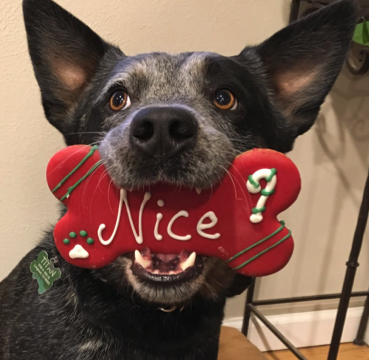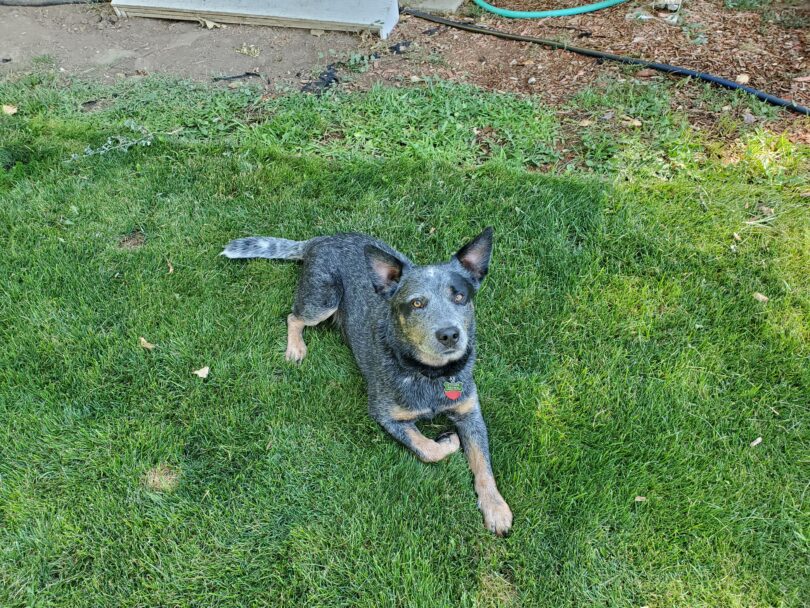In episode 35 of the Paws & Reward Podcast, I interview my client and dear friend, Liz, aka Titan’s mom. Liz shares her experience of the dog training and behavior modification process from her lens. We discuss how important your mindset is as you prepare to socialize your dog, specifically, how important it is to celebrate neutral responses from your dog instead of getting hung up on only looking for positive responses. Watch our conversation on my YouTube Channel.
Liz called me in the summer of 2020 and asked me to be her behavior consultant after reading my book. I was so flattered by this but also very intimidated by the case. I had not worked with inter-household aggression resulting in injury before and was overwhelmed by the complexity of the case. I was honest with Liz and suggested I might not be the right fit for her but she insisted.
Little did we know that both of our worlds would change forever. I started taking on more complex cases, got my Dog Behavior Consultant certification through IAABC, and fell in love with cattle dogs. And Liz fell in love with LIMA-based training, passed KPA with flying colors, and expanded as a person during the process.
These are the behavior concerns Liz was dealing with regarding Titan:
- Inter-household aggression resulting in injury
- Arousal-induced aggression
- Reactivity on leash to other dogs
- Noise sensitivity when inside the home
- And, herding breed reactions to moving objects such as cars while crossing the street

During the dog behavior modification process, Liz and I focused on changing Titan’s emotions to change the behavior in the presence of these various triggers. We often talked a lot about going from a NEGATIVE emotional response to a POSITIVE emotional response; however, both of us were glossing over the middle ground: NEUTRAL.
What is the importance of neutral emotional responses when you want to socialize your dog?
The definition of neutral is having no strongly marked or positive characteristics or features. For dogs, it can look like disengagement from the trigger, interest without reactivity, or peaceful coexistence. These are HUGE behavior choices to celebrate when you socialize your dog.
However, if we’re only looking for positive and social interactions from a dog that has a learning history of negative experiences, then we’re going to miss out on a lot of opportunities to reinforce the dog and celebrate the progress.
We all need immediate reinforcement for our behavior to continue, so finding the small wins along the way in order to maintain everyone’s behavioral momentum is critical.
How does forgetting about neutral affect our expectations?
Setting the goal post at neutral gives us realistic expectations when you socialize your dog. It can be hard to let go of more “exciting” goals because neutral responses can seem boring, but it’s actually teaching your dog to be balanced and relaxed which is more useful and realistic.
How might our skewed expectations impact our training plan and our relationship with our dog?
Placing high expectations on our dogs can set everyone up to fail. When that happens, we become frustrated and that impacts the dog training plan. Setting expectations that are within sight will allow for more opportunities within the dog training plan. Having a more fluid approach will help you and your dog’s relationship grow in a successful way.
More Resources:
- Podcast Episode # 12: The Good Enough Dog
- Socialziing yiour dog can be a hard process so check out my Six Connection Principles to help you set realistic dog training expectations!

